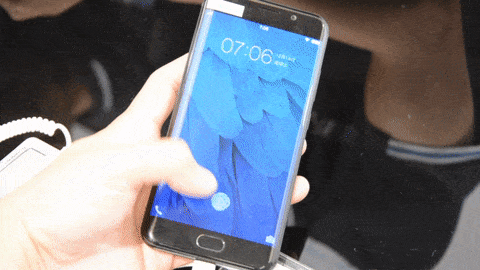2018's flagship phones could rival iPhone 8 with under-screen finger scanning
In line for the Galaxy S9, LG G7 and HTC U12?

There's been a lot of talk about fingerprint scanners being moved under the screen of our smartphones, but we’re yet to see a handset launch with this tech. That could change in a big way in 2018 though, after Qualcomm announced its own implementation.
Talking at MWC Shanghai, the San Diego-based company unveiled the latest generation of its Snapdragon Sense ID fingerprint technology, with the headline feature being the ability for the digit reader to be embedded below the display of a device.
The technology only works with OLED panels, which means handsets boasting LCD displays won't be able to take advantage of it.
Qualcomm uses ultrasound technology to achieve this breakthrough – which also works through glass and metal – and its sensor can monitor your heart rate and blood flow as well.

What about the iPhone 8?
The new version of Snapdragon Sense ID will be rolled out to manufacturers later this year, with Qualcomm predicting the first devices arriving in early 2018 – just in time for the likes of the Samsung Galaxy S9, HTC U12, LG G7 and Huawei P11.
That means that it won’t arrive in time for the iPhone 8 – hotly tipped to arrive in September or October with an OLED display and under-screen fingerprint scanning tech.
Apple may have another solution to the tech allowing it to launch before 2018, or it could signal that while it may announce the iPhone 8 this year, we may have to wait until next year for the phone to go on sale.
Get daily insight, inspiration and deals in your inbox
Sign up for breaking news, reviews, opinion, top tech deals, and more.
The second scenario seems less likely though, especially when you consider the relationship between Apple and Qualcomm is far from civil at the moment.
What is clear though is that under-screen fingerprint scanners will be big business for 2018's flagship smartphones.

TechRadar's former Global Managing Editor, John has been a technology journalist for more than a decade, and over the years has built up a vast knowledge of the tech industry. He’s interviewed CEOs from some of the world’s biggest tech firms, visited their HQs, and appeared on live TV and radio, including Sky News, BBC News, BBC World News, Al Jazeera, LBC, and BBC Radio 4.